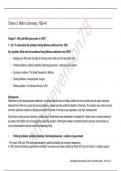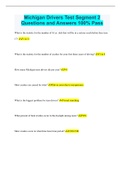Other
Cambridge International A Level History 9489_ Hitler’s Germany, 1929–41
- Module
- European History (9489)
- Institution
- CIE
These revision notes follow the updated CAIE A-level History 9489 syllabus and scheme of work for Paper 4: European option, Depth study 1: European history in the interwar years, 1919–41, Theme 3: Hitler’s Germany, 1929–41. Easy to follow, clear and very detailed notes that cover all the core...
[Show more]






